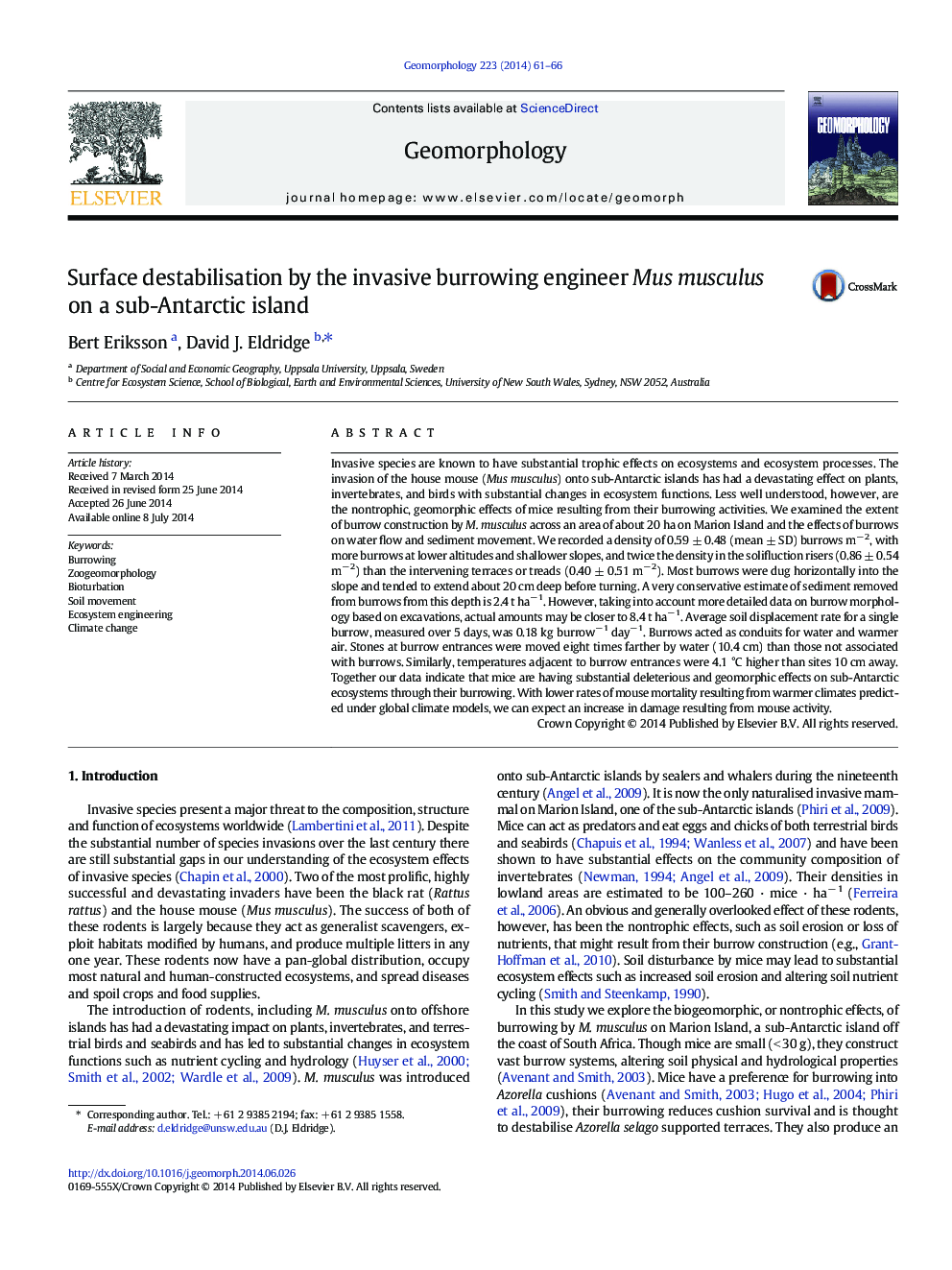| کد مقاله | کد نشریه | سال انتشار | مقاله انگلیسی | نسخه تمام متن |
|---|---|---|---|---|
| 6432383 | 1635426 | 2014 | 6 صفحه PDF | دانلود رایگان |

- Mouse burrowing leads to substantial soil loss.
- Mouse burrowing altered near surface microclimate and increased runoff.
- Effects of burrowing are likely to increase under warmer climates.
Invasive species are known to have substantial trophic effects on ecosystems and ecosystem processes. The invasion of the house mouse (Mus musculus) onto sub-Antarctic islands has had a devastating effect on plants, invertebrates, and birds with substantial changes in ecosystem functions. Less well understood, however, are the nontrophic, geomorphic effects of mice resulting from their burrowing activities. We examined the extent of burrow construction by M. musculus across an area of about 20 ha on Marion Island and the effects of burrows on water flow and sediment movement. We recorded a density of 0.59 ± 0.48 (mean ± SD) burrows mâ 2, with more burrows at lower altitudes and shallower slopes, and twice the density in the solifluction risers (0.86 ± 0.54 mâ 2) than the intervening terraces or treads (0.40 ± 0.51 mâ 2). Most burrows were dug horizontally into the slope and tended to extend about 20 cm deep before turning. A very conservative estimate of sediment removed from burrows from this depth is 2.4 t haâ 1. However, taking into account more detailed data on burrow morphology based on excavations, actual amounts may be closer to 8.4 t haâ 1. Average soil displacement rate for a single burrow, measured over 5 days, was 0.18 kg burrowâ 1 dayâ 1. Burrows acted as conduits for water and warmer air. Stones at burrow entrances were moved eight times farther by water (10.4 cm) than those not associated with burrows. Similarly, temperatures adjacent to burrow entrances were 4.1 °C higher than sites 10 cm away. Together our data indicate that mice are having substantial deleterious and geomorphic effects on sub-Antarctic ecosystems through their burrowing. With lower rates of mouse mortality resulting from warmer climates predicted under global climate models, we can expect an increase in damage resulting from mouse activity.
Journal: Geomorphology - Volume 223, 15 October 2014, Pages 61-66